Happy Birthday to Our Fellow 'Great Observatory'
If you are at all interested in astronomy, chances are you’ve heard that the Hubble Space Telescope is celebrating its 25th anniversary this week. What some people may not know is that Hubble is one of four siblings, so to speak. Back in the 1980s, NASA commissioned the"Great Observatories," each designed and built to study different wavelengths of light.
The four Great Observatories, in order of their launches that took place between 1990 and 2003, are Hubble, the Compton Gamma Ray Observatory, the Chandra X-ray Observatory, and the Spitzer Space Telescope. You can learn a little more about each of these telescopes here: http://www.nasa.gov/audience/forstudents/postsecondary/features/F_NASA_G...
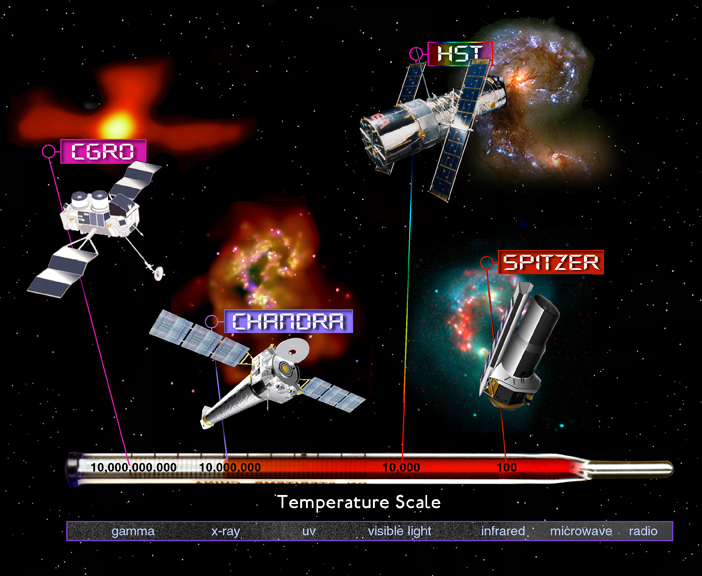
Over the years, astronomers have used often used data from these telescopes together. Not only does this reap incredible scientific rewards, but the combined datasets from the different observatories often make spectacular images that help all viewers get a more complete picture of our fascinating Universe. We think this may be a perfect example of Aristotle’s old adage that the whole is truly greater than the sum of its parts.
With that, we here at the Chandra X-ray Center extend our warmest birthday wishes to our fellow Great Observatory with a selection of our favorite Hubble-Chandra composite images. If giant telescopes in space could give hugs, we’d do that right about now. Here’s to a great 25 years, Hubble, and we’re looking forward to many more.
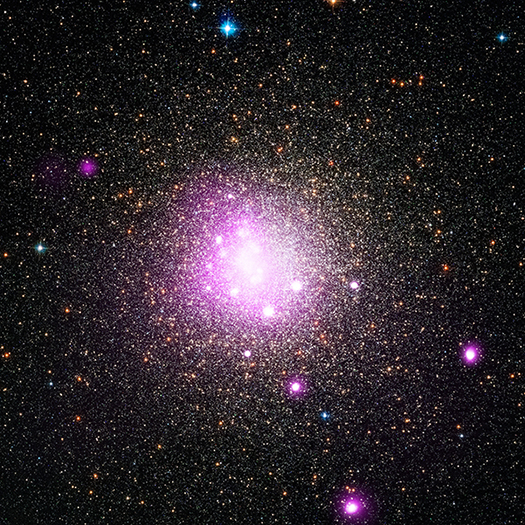
NGC 6388: White Dwarf May Have Shredded Passing Planet
A globular cluster about 35,000 light years from Earth.
Chandra X-ray (Pink); Hubble Optical (Red, Green, Blue)
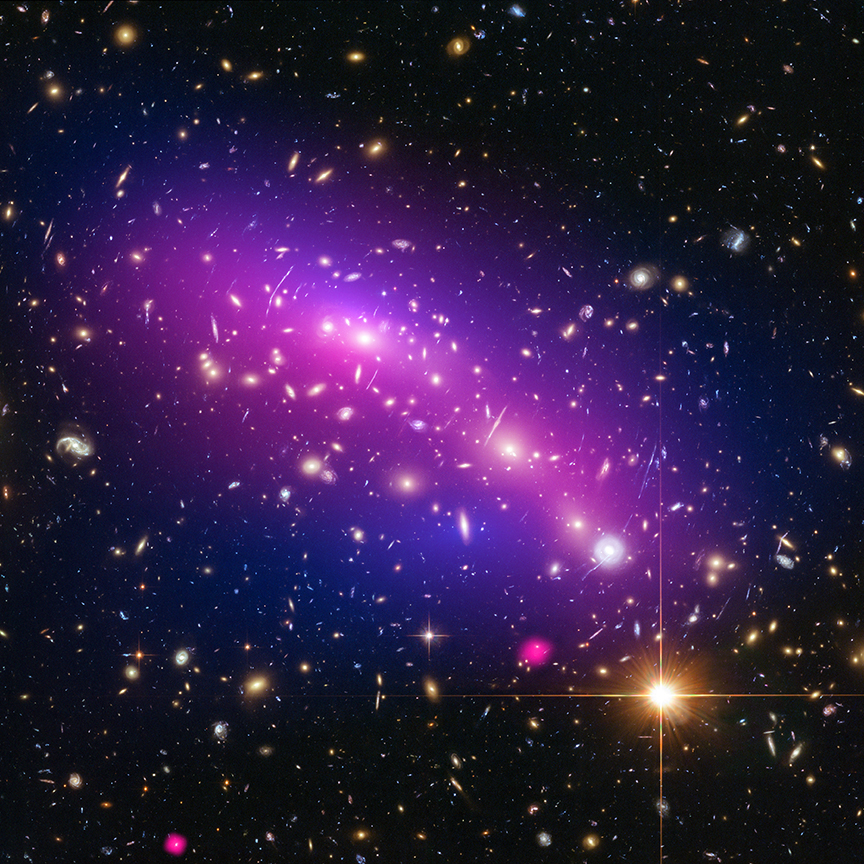
MACS J0416.1-2403: Dark Matter is Darker Than Once Thought
Six galaxy clusters that are part of a study of 72 colliding clusters
Chandra X-ray (Pink); Hubble Optical (Red, Green, Blue); Lensing Map (Blue)
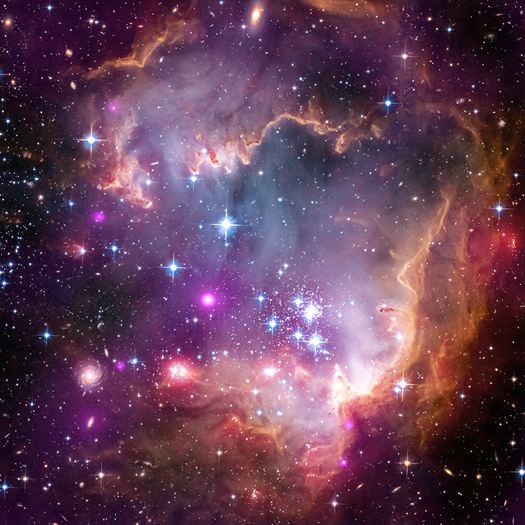
NGC 602: Taken Under the "Wing" of the Small Magellanic Cloud
Young stars in the Small Magellanic Cloud (SMC), one of the closest galaxies to our Milky Way.
Chandra X-ray (Purple); Hubble Optical (Red, Green, Blue); Spitzer Infrared (Red)
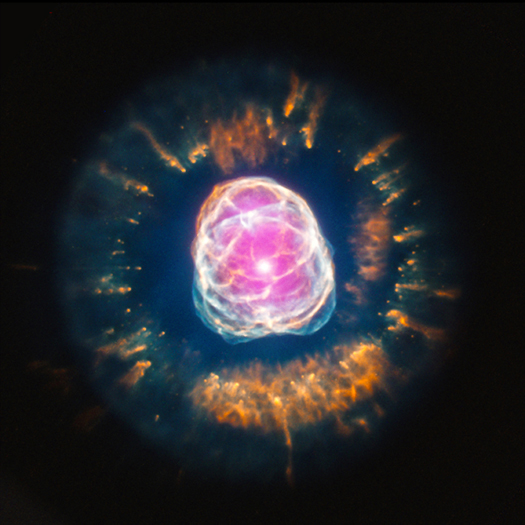
NGC 2392: A Beautiful End to a Star's Life
A Sun-like star in its end phase of life about 4,200 light years from Earth.
Chandra X-ray (Pink), Hubble Optical (Red, Green, Blue)
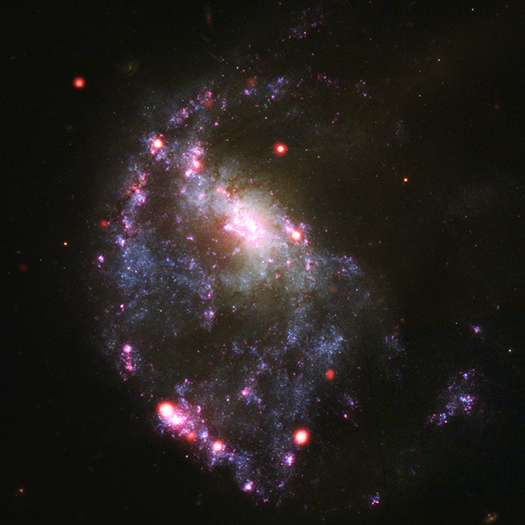
NGC 922: Searching for the Best Black Hole Recipe
A ring galaxy about 157 million light years from Earth.
Chandra X-ray (Red); Hubble Optical (Red, Green, Blue)
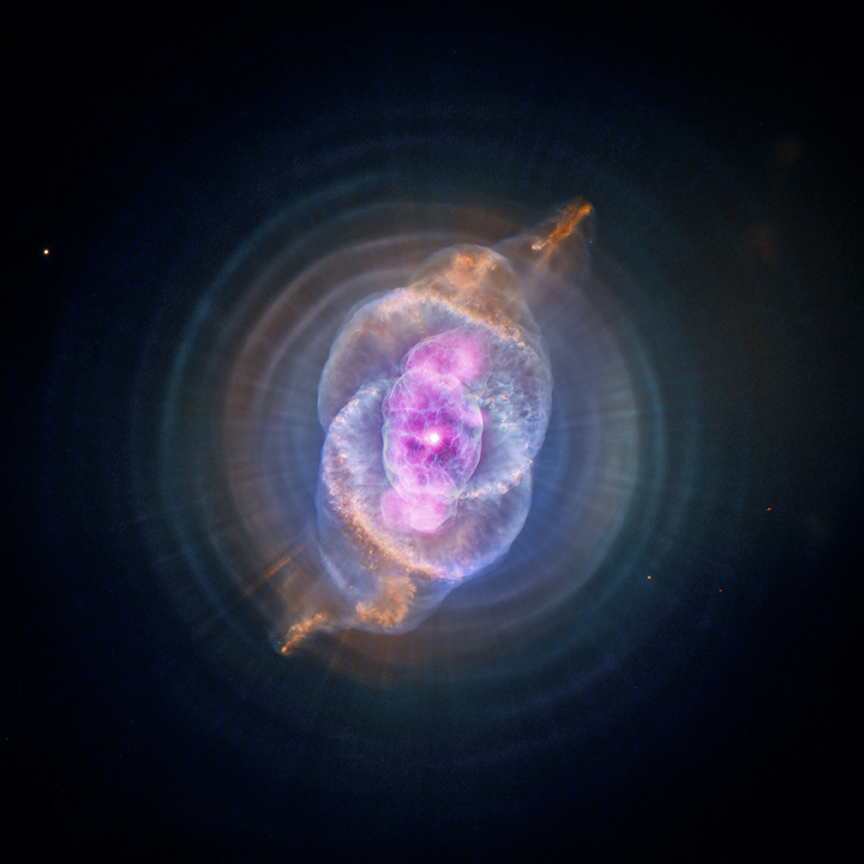
NGC 6543: A Planetary Nebula Gallery
Four planetary nebulas located less than 5000 light years from Earth.
Chandra X-ray (Purple), Hubble Optical (Red, Green, Blue)
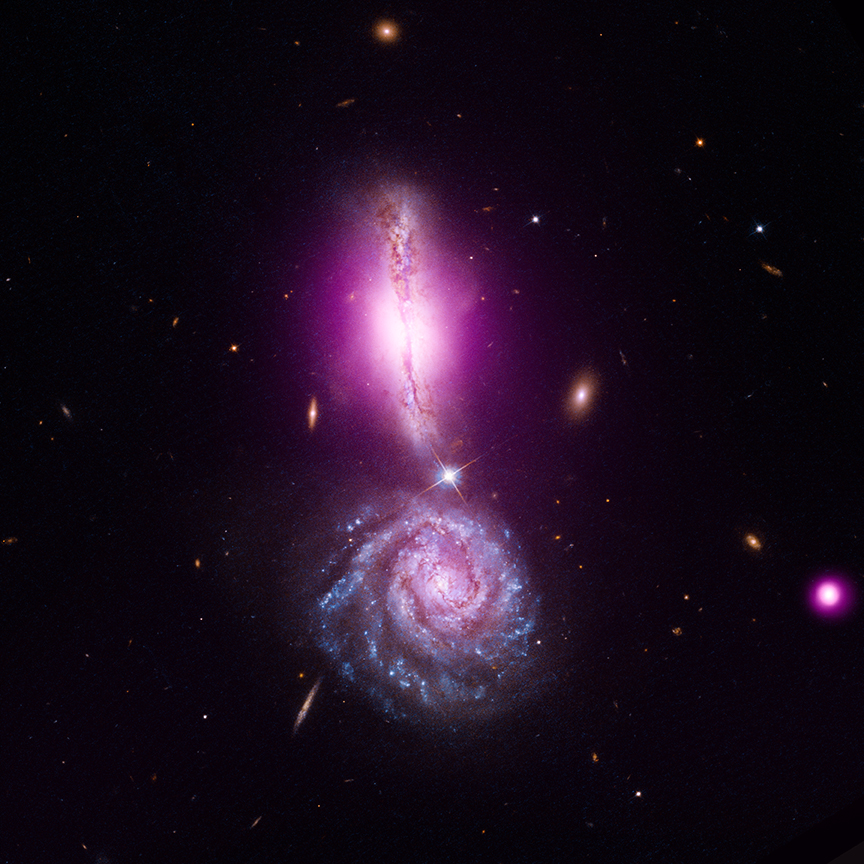
VV 340: A Cosmic Exclamation Point
A pair of galaxies located about 450 million light years from Earth.
Chandra X-ray (Purple); Hubble Optical (Red, Green, Blue)
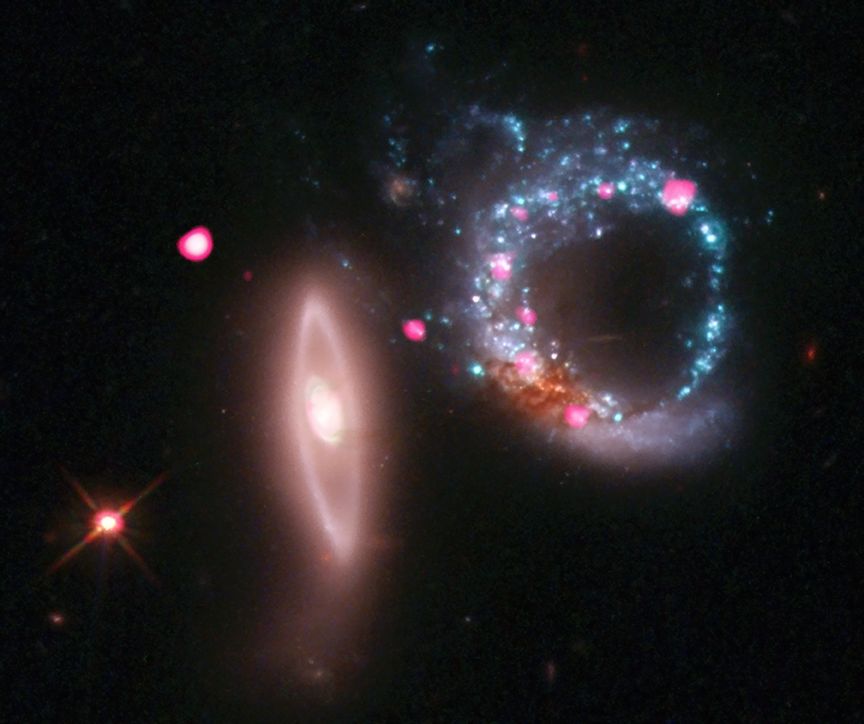
Arp 147: Giant Ring of Black Holes
A galaxy about 430 million light years from Earth.
Chandra X-ray (Magenta); Hubble Optical (Red, Green, Blue)
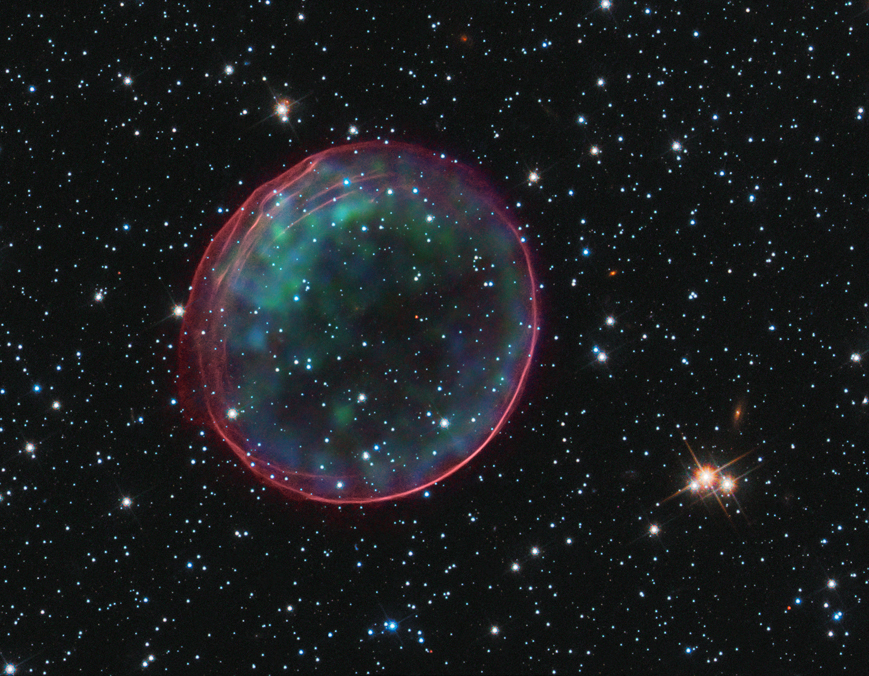
SNR 0509-67.5: Supernova Bubble Resembles Holiday Ornament
A supernova remnant in the Large Magellanic Cloud, which lies about 160,000 light years from Earth.
Chandra X-ray (Green=0.2-1.5 keV, Blue=1.5-7 keV), Hubble Optical (Orange, Red, Violet)
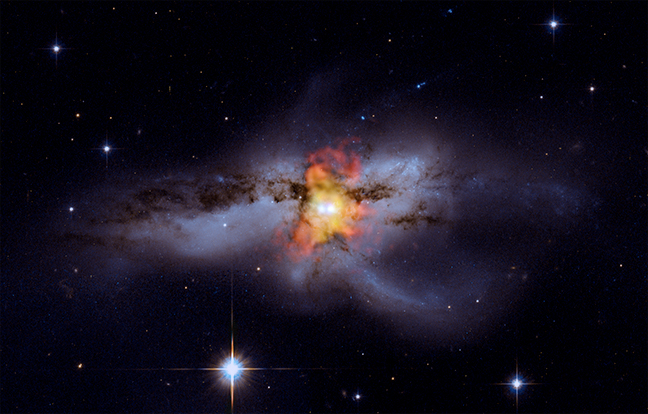
NGC 6240: Black Holes Go "Mano A Mano"
A galaxy about 330 million light years from Earth.
Red (0.5-1.5 keV); Green (1.5-5 keV); Blue (5-8 keV)
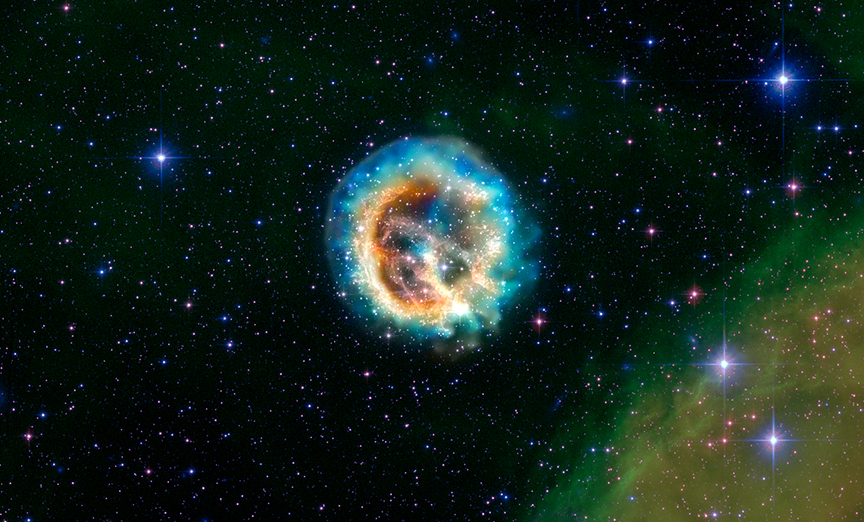
E0102-72.3: Adding a New Dimension to an Old Explosion
Officially known as 1E0102.2-7219, a supernova remnant in the Small Magellanic Cloud.
Chandra X-ray (Blue, Cyan, Orange); Hubble Optical (Blue, Green, Red )
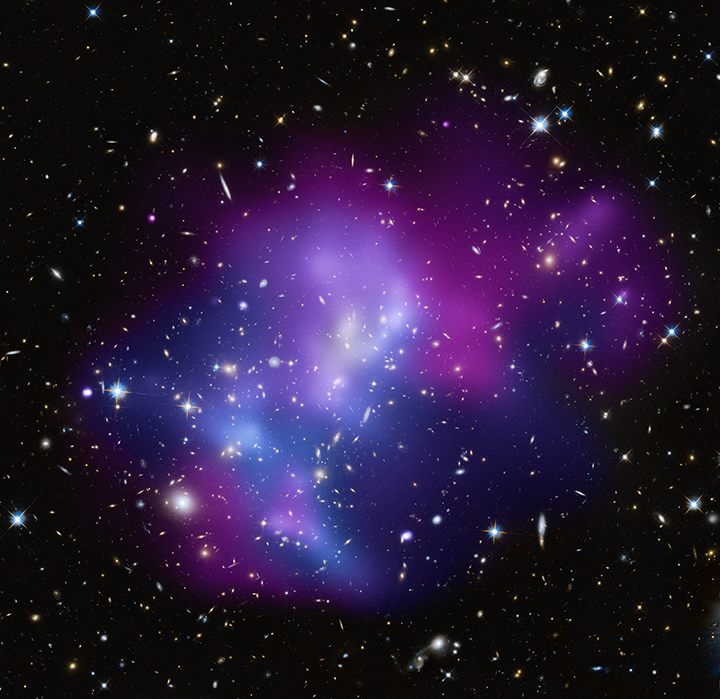
MACSJ0717.5+3745: Cosmic Heavyweights in Free-For-All
One of the most complex galaxy clusters known, located about 5.4 billion light years from Earth.
Chandra X-ray (Blue, Violet); Hubble Optical (Cyan, Yellow)

Orion Nebula: Peering into the Orion Nebula
A rich cluster of young stars about 1,500 light years from Earth.
Chandra X-ray: (Blue, yellow, orange); Hubble Optical (red-purple)
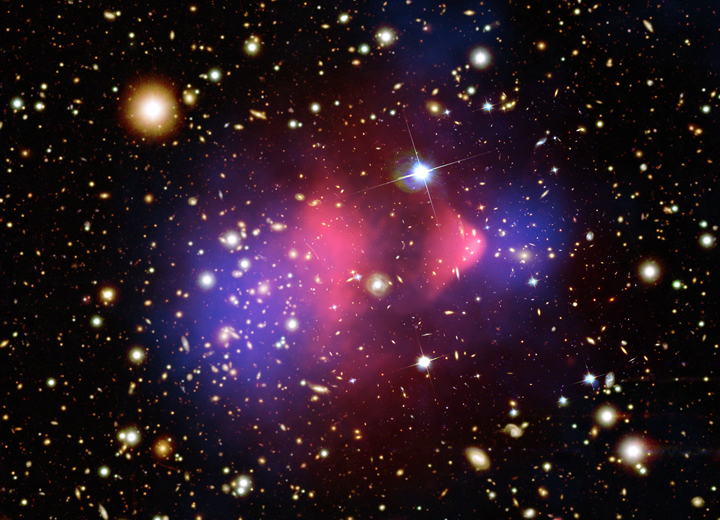
1E 0657-56: NASA Finds Direct Proof of Dark Matter
Site of a collision between two large galaxy clusters about 3.4 billion light years from Earth.
Energy (Chandra X-ray: Pink; Hubble Optical: White/Orange; Lensing Map: Blue)
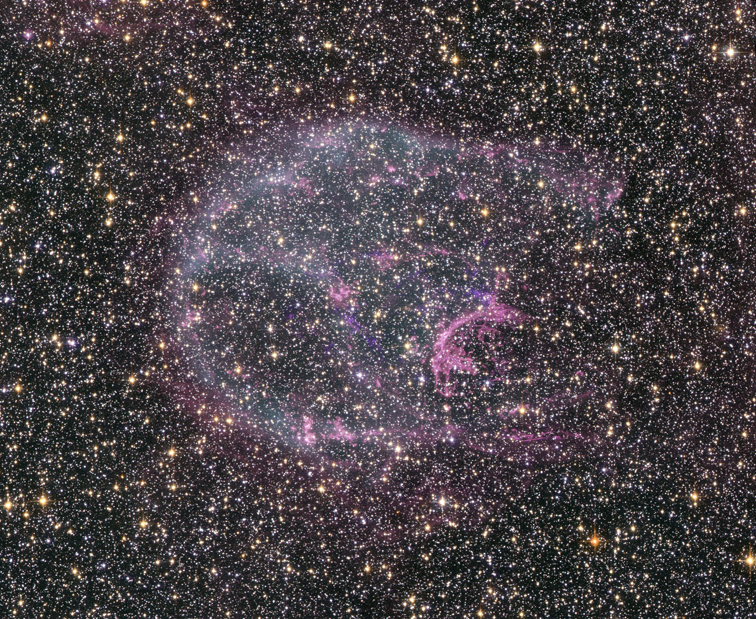
N132D: NASA Space Observatories Glimpse Faint Afterglow of Nearby Stellar Explosion
A supernova remnant in the Large Magellanic Cloud, about 160,000 light years from Earth.
Chandra X-ray: Blue; Hubble Optical: Pink & Purple
-Megan Watzke & Kim Arcand, CXC
Please note this is a moderated blog. No pornography, spam, profanity or discriminatory remarks are allowed. No personal attacks are allowed. Users should stay on topic to keep it relevant for the readers.
Read the privacy statement
